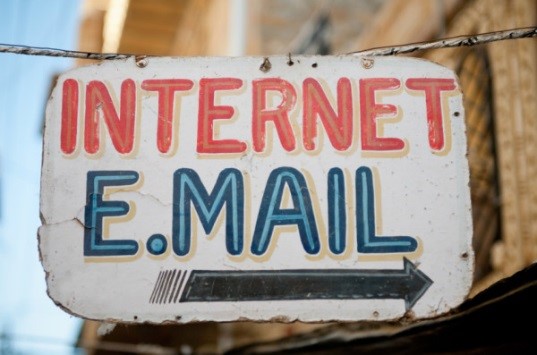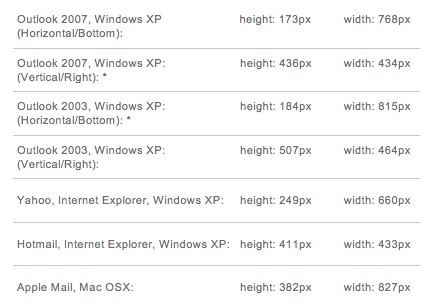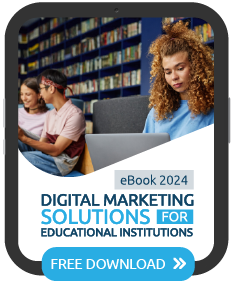Email is probably the most commonly used digital marketing tactic of higher ed marketers. At its simplest it is a straightforward communications tool used to communicate directly with prospects and students on a one on one basis. At its most sophisticated it can be a platform for complex and highly effective multi-touch marketing campaigns that engage, nurture and convert prospect at multiple points across the recruitment funnel. High quality email campaigns can produce marketing ROI’s as good or better than all other digital marketing tactics.
Your college or university’s use of email marketing is likely somewhere in the middle on this continuum of sophistication. Here are 20 tips to help you elevate your practice and improve your recruitment results.
- The email blast is dead. Today, effective email is all about segmentation and personalization, pivoting on permission-based, content marketing. If you are still thinking about email as “email blasts”, using the good old “spray and pray” approach, it is time to regroup your efforts, retrain yourself and your staff on what has been learned about email marketing over the last 5-10 years and apply a better approach. It is an investment in time and money but you will benefit greatly from this newer, proven approach.

- Single opt-in permission should be the MINIMUM standard for names that you email to.
(But double opt in is even better). With privacy laws, confidentiality and SPAM laws to live up to, you need to be sure that your email activities are fully compliant with these emerging standards and requirements. SPAM penalties now exist within the system to motivate you to do this but, more importantly, the effectiveness and results you will get from a high quality email program will far exceed the efforts it takes to create it, and you will be much more successful with it in the long run.
- You should consider using an external Email Service Provider to manage your email campaigns. Using an external ESP like Campaign Monitor or marketing automation tool like HubSpot has many benefits. An ESP can provide you access to shortcuts and expertise around email marketing that will bootstrap your current email performance and take your sophistication to a new level. Tools range from simple to complex, from free to costly. Find the right tool for your program and regardless of your current level of activities your results will improve. Using an ESP will allow you to do more email personalization, better track email metrics and protect your email server from possible blacklisting if you are not doing things correctly.
- Different types of email will get your very different response rates. The average email open rate for education and training, (as reported by MailChimp, see below), is approximately 23%. Click rates are around 3%.These stats provide a basic benchmark that you can use but you must realize that your email results can and will likely be different. Welcome, informational, transactional, promotional, thank you, newsletter emails all produce different degrees of engagement and reaction. Emails within triggered campaigns, lead nurturing campaigns and drip campaigns will produce different results. As you develop more complex campaigns, you will see that each email is unique and needs to be examined individually, as well as a component of more complex campaign metrics.

- Subject lines are critical to your open rates. The subject line of an email will make or break your campaign results. Best practices are that it should be around 50 characters long. Email experts will tell you that boring straightforward subject lines often get better results than those that attempt to be “salesy”. Keep your titles simple, telling your reader what is in the email not “selling it”. And of course, don’t be spammy – no all caps, symbols, dollar signs, or “salesy” keywords that are going to attract the attention of a spam filter. Find more about subject lines here.
- Don’t forget to design your email to be effective in preview filters. Only one in five emails get opened, meaning only one in five get past a person’s preview of the email, which of course depends on the email client they are using. See below for details of the preview areas of various browsers. One in five email never gets past this view so if you want to be one of them, make sure your email’s copy and or images that appear in the roughly, 300 x 400 pixel, upper left hand area are key, relevant content that will highly engage the recipient and get your email opened.

- Add custom campaign parameters to URL links in your email to your email landing pages. Adding these simple campaign parameters,
to the links to your landing pages will provide you a wealth of information about the traffic and conversions that are being generated by your email campaigns. These campaign tags track visitors coming into your website and provides details of their visit and conversion (goal) actitvity.
- Build landing pages for email, similar to how you would for a PPC campaign. It seems pretty well understood these days that PPC ads need landing pages to facilitate conversions towards lead generation and ultimately student registration. The same strategy should apply to your email campaigns. By creating compelling landing pages that present relevant information, downloads or forms, you will significantly increase the odds that you will achieve the objective of your email campaign. Apply the best practices you use in your PPC landing pages to email landing pages and your will see stronger results.
- Send email on the optimal day of the week, at the optimal time of day. “Optimal” for you can be determined by a number of indicators. Look at your past email analytics to determine when people are most commonly opening your email. Look at your Google analytics to determine when most people are clicking through to your email landing pages. Generally most BtoC businesses send out emails, on Mondays to Thursdays. According to MailChimp, open rates peak on Tuesdays and Fridays between 2 – 4 pm. Alternatively, Wordstream data suggests the best time to send is on Thursdays between 8 – 9 am. Develop your schedule based on your email’s stats and optimize for best results. And remember, generally about 25 % of email opens happen within 1 hour of delivery so make sure you get them into the inbox at the optimal time.

- Carefully measure your email campaign’s performance. Email service providers will give you all the details to track the performance of your email campaigns. If you are mailing on your own you will need some help from your IT people for a number of things including how to get the reports you need to analyze your performance. Use your stats to maintain your list in optimal shape, culling bounces and unsubscribes as you go. It is critical to track email campaigns over time, incorporating all of your email activities including welcomes, information, reminders, and calls to act, etc., across multiple emails to determine the ROI on the email relationship that you have built with your prospective students.
We hope these tips will help you fine tune your email campaigns and improve your overall email ROI. Please let us know if you find these helpful and pass along any additional gold nuggets of your own that we can share with our readers.











